Watercress, Water Cress
Nasturtium officinale
Synonyms: Rorippa nasturtium-aquaticum, Sisymbrium nasturtium-aquaticum
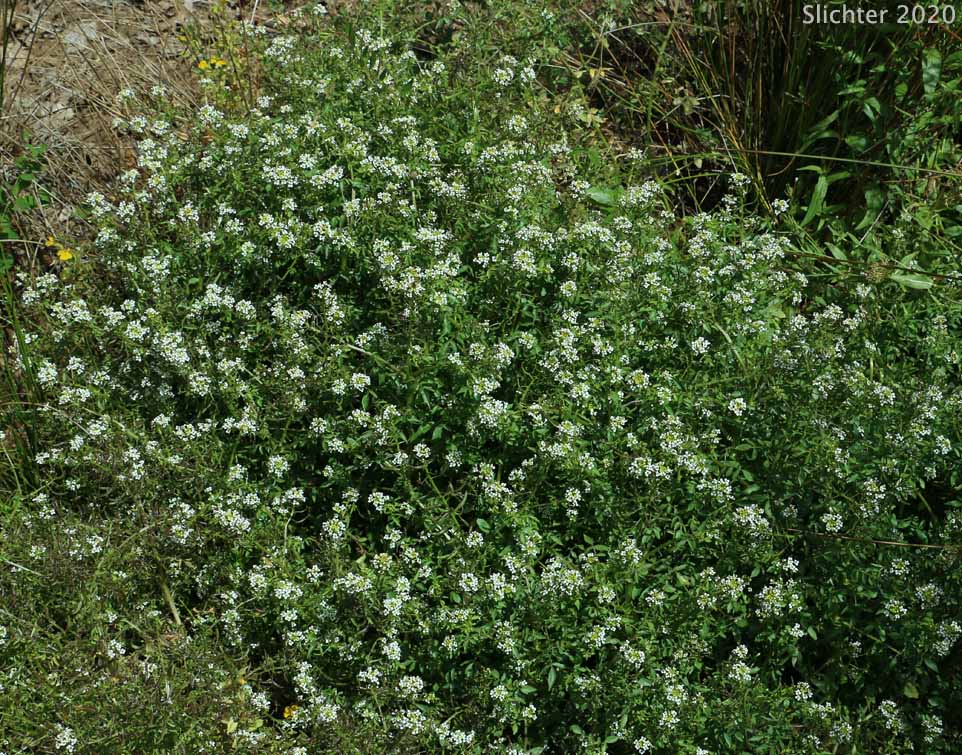
Watercress in a moist drainage below a spring along the Box Canyon Road, Simcoe Mountains Unit of the Klickitat Wildlife Area.........July 1, 2020.
Characteristics:
Watercress is an aquatic or subaquatic perennial with creeping
stems from 10-60 cm long and which are often found floating. The stems are succulent,
glabrous and they often root at the nodes. The glabrous leaves aer pnnate and
measure 4-12 cm long. The 3-11 segments are ovate to lanceolate in shape with
the larger terminal lobe lanceolate, ovate or heart-shaped.
The racemes are short and corymb-like in flower and elongate
in fruit. The pedicels measure 8-20 mm long and are spreading recurved or ascending.
The sepals are white while the whitish petals are broadly spatulate and measure
3-4 mm long. They often purplish-veined or tinged. The fruits are arched, spreading
siliques that measure 10-20 mm long and about 2 mm wide.
Watercress is often used as a tasty salad green.
Habitat:
Watercress is found in slow moving water in streams, ditches
and canals.
Range:
Native to Europe, watercress may be found across much of North
America.
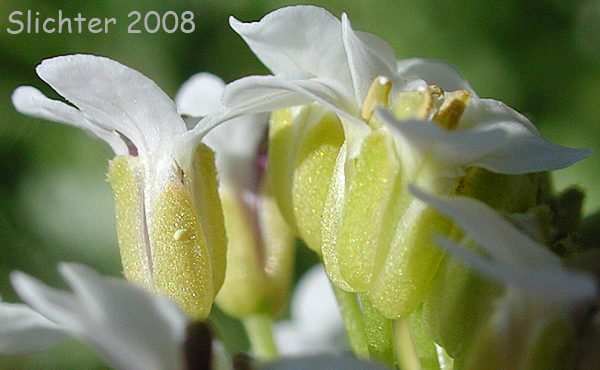
This photo shows a close-up of the flowers of watercress as seen in a pond at the Dalles Mt. Ranch in the Columbia Hills State Park of south-central Washington.........June 8, 2008.
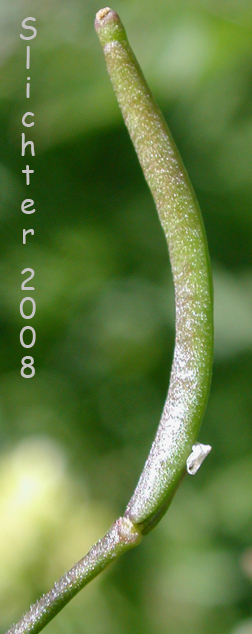
This photo shows a close-up of the developing seed pod of watercress as seen in a pond at the Dalles Mt. Ranch in the Columbia Hills State Park of south-central Washington.........June 8, 2008.
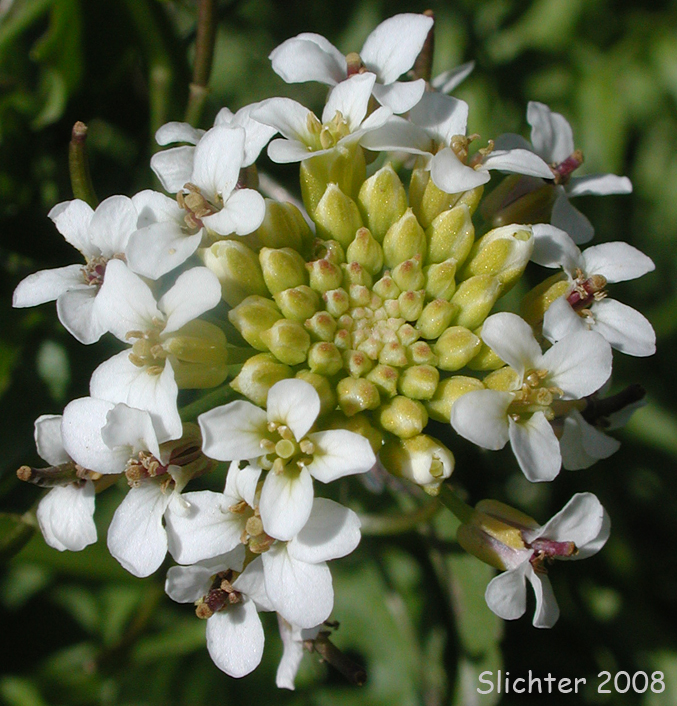 -
- 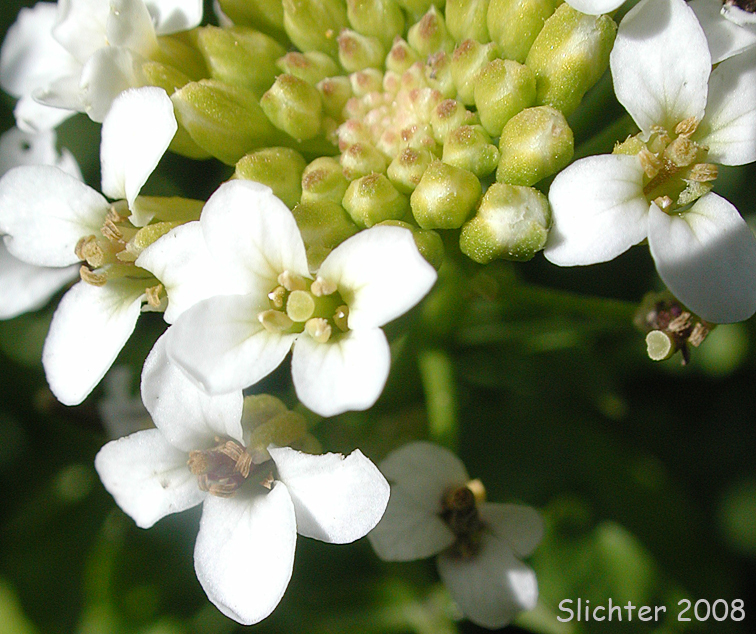
Close-up images of the inflorescence of watercress as seen in a pond at the Dalles Mt. Ranch in the Columbia Hills State Park of south-central Washington..........June 8, 2008.
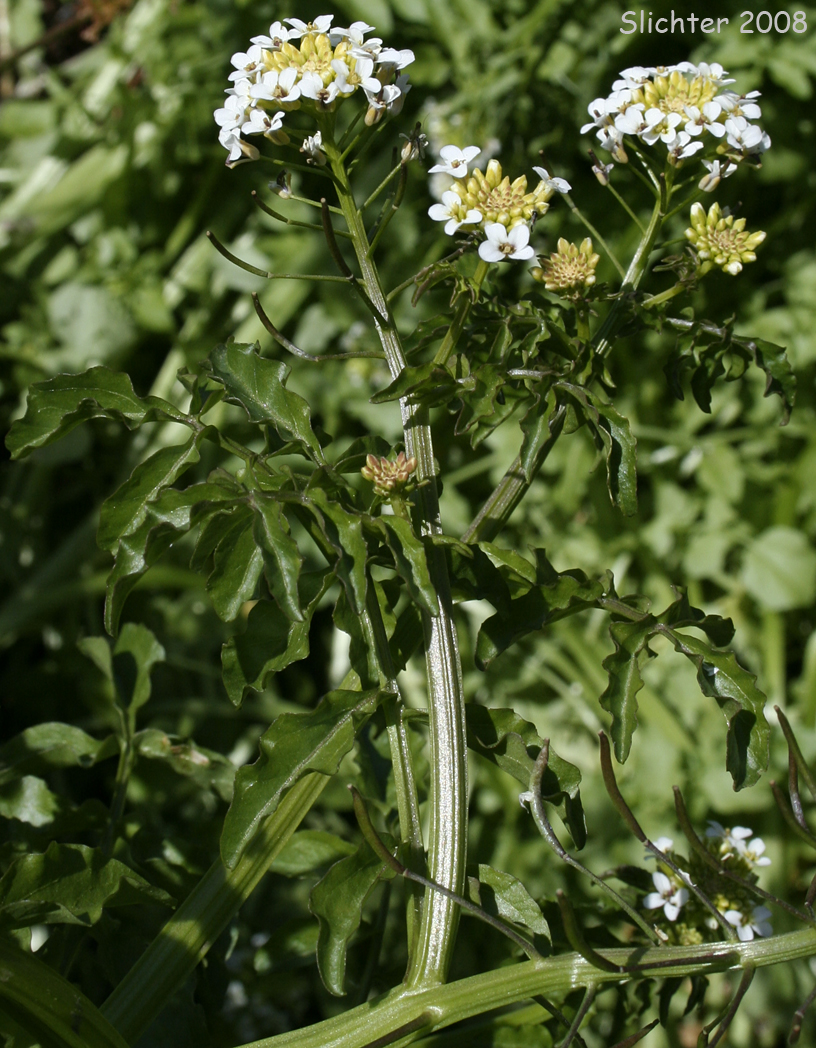 -
- 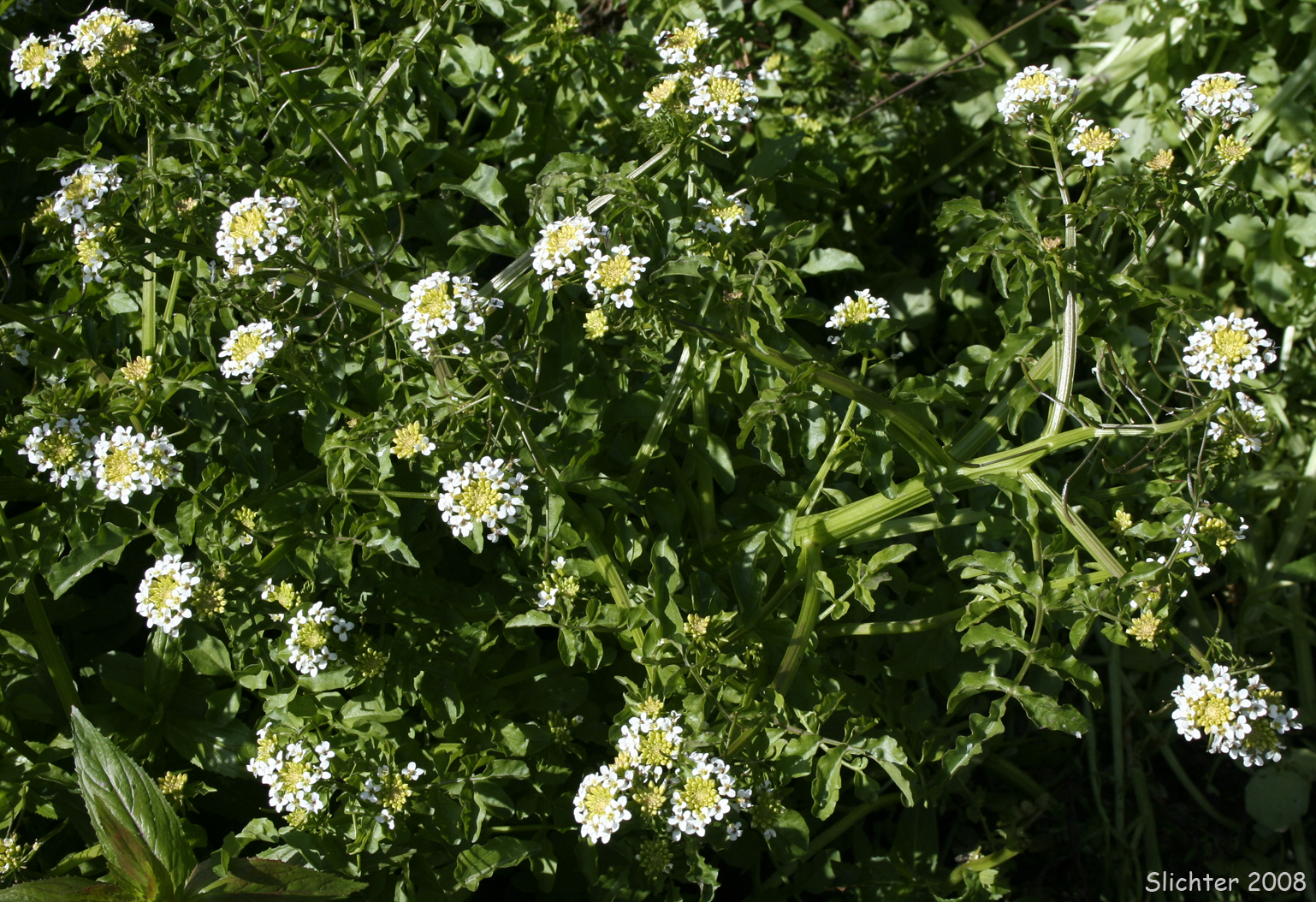
These 2 photos show watercress as seen in a pond at the Dalles Mt. Ranch in the Columbia Hills State Park of south-central Washington.........June 8, 2008.
Paul Slichter
